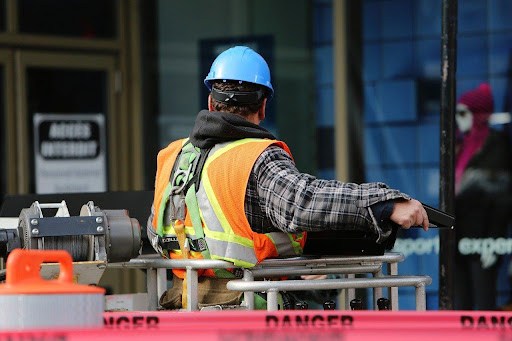Climate Change and the Law: Opportunities and Challenges for Attorneys

Legal ethics have always challenged lawyers to consider how their work impacts not only individual clients but also the communities that support their practices. Increasingly, however, legal ethics go beyond the local community and extend to the environment as a whole.

Climate change, in particular, is a huge area of concern that promises to impact every practice area imaginable. It deserves attention in the legal sector not only on Earth Day but also throughout the year. Lawyers are often part of the problem, but they can also produce accessible solutions.
Former Secretary of State and current Special Presidential Envoy for Climate John Kerry recently referenced the interplay between climate change and the law while addressing the American Bar Association. He warned, “You are all climate lawyers now, whether you want to be or not…there is a place for lawyers to help hold back the tide and create new pathways.”
Kerry added that some attorneys would “write the laws that will drive these transformative interventions,” while others will be responsible for administering and enforcing such legislation.
To build on John Kerry’s explanation and illustrate the scope of climate change as it applies to the legal industry, we’ve highlighted several compelling examples below. Keep reading to learn about the many practice areas and individual cases in which climate change could — and should — come into play.
Immigration
Refugees have long sought guidance from attorneys, but they’ve typically needed safe havens to flee warzones or religious persecution. Already, however, many seek new lives after escaping regions devastated by climate-related disasters.
According to the United Nations High Commissioner for Refugees (UNHCR), 21.5 million people have been displaced by disasters linked to climate change since 2010. Experts at the Australian think tank known as the Institute for Economics and Peace predict that, by 2050, 1.2 billion people will be displaced due to climate change.
As the ABA points out, the higher volume of climate-related refugees and immigrants will prompt the need for a revised path of entry. This could be a huge area of opportunity for the U.S. immigration system but could also lead to new restrictions as a greater volume of refugees seek haven away from climate disasters. What’s promising, however, is a 2020 U.N. Human Rights Committee ruling, which mandates that “countries may not deport individuals who face climate change-induced conditions that violate the right to life.”
Currently, options such as Temporary Protected Status (TPS) provide limited assistance to those fleeing environmental disasters. Unfortunately, TPS only applies to temporary disruptions in living conditions, so it may not apply to future immigrants impacted by the long-lasting effects of climate change. Another concern is that TPS can be revoked for many reasons and still fails to provide a path to legal residency.
A proposed solution is expanding the Immigration and Nationality Act (INA) so that climate migrants can seek asylum. Perhaps the INA will eventually contain a targeted category that assists the growing population of climate change refugees.
Moving forward, immigration attorneys should be prepared to help a new category of clients who do not fall neatly into this evolving practice area. Creative solutions will be required to ensure that vulnerable climate refugees and aspiring citizens are able to find safety and a sense of hope or that they can fight back when unfair immigration restrictions stand in the way.
Zoning and Land Use
Zoning and land use law represent two of the greatest areas in which attorneys can positively influence the environment. After all, large-scale zoning changes will ultimately be key to combatting climate change. Unsustainable land use is especially problematic in the United States, where suburban sprawl forces Americans to dedicate many extra hours to their vehicles. Our approach to land use also prompts higher emissions during the construction process and greater water pollution over time.

This is an area of opportunity for local and state-based government entities, as the federal government is not directly responsible for land use. Zoning bans on high-density housing will need to be changed; a simple first switch could involve the allowed addition of multi-family homes into areas previously dominated by single-family construction.
Objections from local stakeholders (commonly referred to as NIMBY or “not in my backyard”) have created huge obstacles for well-intentioned developers, even after obtaining approval from local government entities and satisfying all environmental requirements. Attorneys can help streamline the process of implementing climate-friendly zoning changes even in the midst of NIMBY opposition. Land use concerns may also involve better utilization of so-called unproductive land for creating renewable energy sources. For example, the Renewable Energy Legal Defense Initiative (RELDI) took on an upstate New York case involving farmers who wanted to lease land to construct a solar array in the face of strong local opposition. Similarly, RELDI supported offshore wind farm construction near Long Island even as landowners objected to potential disruptions during the construction process.
Real Estate and Landlord-Tenant Law
Climate change’s impact on real estate law largely echoes that of the aforementioned zoning and land use practice areas but is applied to individual buyers and sellers.
Hana Veselka Vizcarra of Harvard Law School’s Environment and Energy Law program explains that rising sea levels and floods will prompt buyers to move away from the traditional thirty-year mortgage instead of taking on riskier payment plans to account for lack of confidence in long-term housing arrangements.
Many commercial and residential clients will turn to skilled lawyers to develop creative solutions that allow them to achieve their real estate objectives in the midst of climate challenges. These lawyers may also need to assist with insurance complications. Not only are rates in certain areas all but guaranteed to rise, providers will be increasingly reluctant to take a chance on properties in high-risk zones.

Sellers may also struggle, as locations disproportionately affected by climate events may become more difficult to market. Mortgage defaults can also be expected, particularly following major disasters.
These issues may ultimately spill over into landlord-tenant concerns, especially among renters who depend on affordable housing. An analysis from nonprofit news organization Climate Central suggests that tens of thousands of U.S. affordable housing units will be at risk of coastal flooding as of 2050. Chronic coastal flooding is expected to have a particularly devastating impact on the low-income residents of Boston, New York City, and Atlantic City.
Under such conditions, vulnerable renters may need additional protections not currently provided under local landlord-tenant laws. Evictions, for example, can be not only emotionally and financially devastating in an age of repeated climate disasters but also downright deadly during record heat waves.
Climate Change Liability
Environmental concerns have brought about a whole new practice area, climate change litigation, in which plaintiffs seek to hold energy companies and other major corporations accountable for their large-scale contributions to environmental degradation. Typically drawing on common law theories, state or local governments often file these cases.
A key example was a 2018 case in which the city of New York brought several major oil companies to federal court. While a federal judge tossed this case (with the explanation that such issues should be resolved via Congress and the executive branch rather than the court system), future efforts to achieve similar goals may stand a better chance. In Honolulu, for example, a climate change lawsuit has reached the discovery phase, thereby breaking new ground in this evolving area of litigation.
Thus far, most climate change cases have sought to hold companies accountable for their contributions to greenhouse gas emissions. Increasingly, however, these lawsuits also target businesses that fail to prepare for climate disasters properly.
For example, following Hurricane Harvey, chemical manufacturer Arkema Inc. was targeted by multiple complaints. Plaintiffs alleged that the company should have been better prepared to deal with natural disasters prompted by climate change. In this specific instance, the consequences of the hurricane included severe flooding and loss of power, which, in turn, resulted in a fire that prompted the evacuation of hundreds of vulnerable people.
Specifically, a complaint against the producer of liquid organic peroxides references “the allegedly controlled ignition of six refrigerated trucks reportedly containing plastic containers filled with organic peroxide.” Questions remain as to the extent to which Arkema Inc. could have anticipated such an extreme hurricane. Still, plaintiffs argue that, given the realities of climate change, any industrial entity situated within a floodplain should be thoroughly prepared for such catastrophes.









